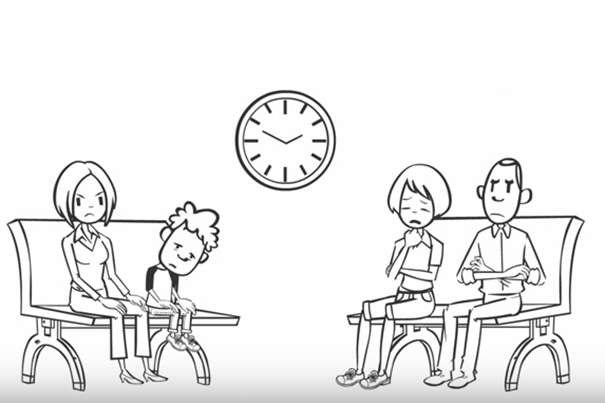Hidden aspect of health care falls disproportionately on the disadvantaged

In 2010, people in the United States spent 1.1 billion hours seeking health care for themselves or for loved ones. That time was worth $52 billion.
"That's about the same as all of the time worked in a year by the entire working population of the city of Dallas," said Ateev Mehrotra, associate professor of health care policy and medicine at Harvard Medical School (HMS). Mehrotra is a lead author of two studies published this fall that measure the amount of time patients spend seeking care; calculate the total time costs to society; and analyze the difference in time burden by race, ethnicity, and socioeconomic status.
Writing in the American Journal of Managed Care, the researchers reported that the average total visit time for a person seeking care for themselves, a child, or another adult was 121 minutes. That total includes 37 minutes of travel time and 84 minutes in the clinic. Of those 84 minutes, people spent only 20 minutes with physicians; they spent the rest of the time waiting, interacting with nonphysician staff, or completing paperwork or billing.
Economists calculate the value of time spent doing an activity—known as opportunity cost—based on the income that an individual would earn working the same amount of time. The researchers calculated that the average opportunity cost per visit was $43, compared with an average out-of-pocket cost per visit of $32.
"We also found that this time burden fell disproportionately on the disadvantaged," said Kristin Ray, assistant professor of pediatrics at the University of Pittsburgh School of Medicine.
Writing in JAMA Internal Medicine, the researchers reported that, while all groups spent the same 20 minutes face-to-face with physicians, blacks and Hispanics spent approximately 25 percent longer when seeking health care than whites, a result of increased travel, wait, and administrative times. Lower-income groups and the unemployed also spent more time seeking care than their better-off counterparts.
"Typically, when we talk about how much we spend on health care, we focus on what is paid to doctors and hospitals through co-pays and insurance payments," said Mehrotra, who is also a physician and HMS professor of medicine at Beth Israel Deaconess Medical Center. "This work helps us put a dollar amount on the significant time it costs people to seek health care."
The researchers said that it is important to consider time costs when evaluating innovative treatment and care delivery models designed to create higher-value, more-patient-centered care and to reduce health care disparities. They noted that many initiatives currently underway might offer considerable benefits in reducing the time-cost burden of health care. These initiatives include streamlining office visits; incorporating clinics into schools, community centers, and places of work; and using new models of care delivery, such as telemedicine visits, e-visits, and other Internet-powered medicine.
The researchers combined data from several sources to calculate time spent in transit, at the clinic, and with clinicians face-to-face. One key resource was the American Time Use Survey, which ties detailed reporting about how respondents spend their day in a given 24-hour period with demographic and income information.
More information: "Opportunity Costs of Ambulatory Medical Care in the United States." Am J Manag Care. 2015;21(8):567-574. www.ajmc.com/journals/issue/20 … in-the-United-States
This story is published courtesy of the Harvard Gazette, Harvard University's official newspaper. For additional university news, visit Harvard.edu.

















